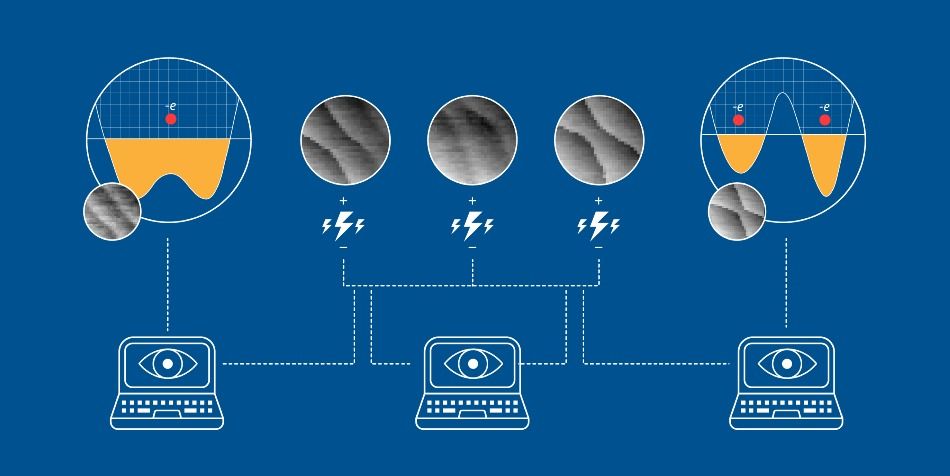The U.S. passed 1,000 coronavirus deaths in a single day Wednesday, a daily death toll more than double lung cancer and the flu.



2007…
Imagine a weapon that creates sound that only you can hear. Science fiction? No, this is one area that has a very solid basis in reality. The Air Force has experimented with microwaves that create sounds in people’s head (which they’ve called a possible psychological warfare tool), and American Technologies can “beam” sounds to specific targets with their patented HyperSound (and yes, I’ve heard/seen them demonstrate the speakers, and they are shockingly effective).
 Now the Defense Advanced Research Projects Agency is jumping on the bandwagon with their new “Sonic Projector” program:
Now the Defense Advanced Research Projects Agency is jumping on the bandwagon with their new “Sonic Projector” program:
The goal of the Sonic Projector program is to provide Special Forces with a method of surreptitious audio communication at distances over 1 km. Sonic Projector technology is based on the non-linear interaction of sound in air translating an ultrasonic signal into audible sound. The Sonic Projector will be designed to be a man-deployable system, using high power acoustic transducer technology and signal processing algorithms which result in no, or unintelligible, sound everywhere but at the intended target. The Sonic Projector system could be used to conceal communications for special operations forces and hostage rescue missions, and to disrupt enemy activities.

Australian government scientists have begun the first stages of testing for a potential vaccine against the SARS CoV-2 coronavirus, which causes the disease COVID-19. Australia’s national science agency CSIRO said Thursday that testing at a biosecurity facility was expected to take three months. The testing is being undertaken in cooperation with the Coalition for Epidemic Preparedness Innovations (CEPI), a global group that aims to help speedily develop vaccines against emerging infectious diseases.
Australia’s national science agency will test two vaccine candidates over the next three months. It is part of a global race to halt the coronavirus pandemic.

COVID-19 has caused a sharp increase in interest around immunity supporting products, such as NZMP’s clinically researched probiotic strains. Dr James Dekker, discusses probiotics ability to support immunity and whether their use is appropriate.

Daily life during a pandemic means social distancing and finding new ways to remotely connect with friends, family and co-workers. And as we communicate online and by text, artificial intelligence could play a role in keeping our conversations on track, according to new Cornell University research.
Humans having difficult conversations said they trusted artificially intelligent systems —the “smart” reply suggestions in texts—more than the people they were talking to, according to a new study, “AI as a Moral Crumple Zone: The Effects of Mediated AI Communication on Attribution and Trust,” published online in the journal Computers in Human Behavior.
“We find that when things go wrong, people take the responsibility that would otherwise have been designated to their human partner and designate some of that to the artificial intelligence system,” said Jess Hohenstein, a doctoral student in the field of information science and the paper’s first author. “This introduces a potential to take AI and use it as a mediator in our conversations.”

In a recently published fundamental review dedicated to the diagnostics of viral infections, a Russian research team featuring MIPT researchers was the first to systematically describe and summarize the cutting-edge technologies in the rapidly developing field of genetics. A number of new effective methods of virus detection have been developed over the past few years, including those targeted at unknown pathogens. The authors described the so-called high-throughput next-generation sequencing as a potent new approach. The method promises to revolutionize the detection and analysis of new pathogenic viruses, but it will be at least several years until it is introduced into mainstream clinical practice.
In response to the rapid spread of the COVID-19 pandemic, an authoritative global scientific journal, aptly named Viruses, published a fundamental review of problems related to identifying and studying emerging pathogens, such as the notorious coronavirus.
“There are, by various statistical estimations, over 320,000 various viruses infecting mammals,” said Kamil Khafizov, a researcher at MIPT’s Historical Genetics, Radiocarbon Analysis and Applied Physics Lab and one of the review’s authors. “But up to date, less than 1% of this vast multitude has been studied.”

Quantum computers will revolutionize information technology, ushering in an era where certain types of calculations will be performed with almost unimaginable speed. Practical applications will include healthcare disciplines such as molecular biology and drug discovery; big data mining; financial services such as portfolio analysis and fraud detection; and artificial intelligence and machine learning.
The federal government is helping to create an environment in which quantum computing innovation and experimentation can flourish. The National Quantum Initiative Act puts $1.2 billion into the quantum research budgets of the Energy Department, the National Institute of Standards and Technology, NASA and the National Science Foundation. The law also outlines a 10-year plan to accelerate the development of quantum information science and technology applications.
Meanwhile, The White House’s Office of Science and Technology Policy is working to ensure that economic growth opportunities and opportunities for improving the world are baked into quantum policies and systems.

The same concept applies to the processor integrated into a quantum computer, whose fragile bits should be tuned optimally before it can execute a calculation. But who would be the right mechanic to perform this quantum tune-up task?
According to a group that comprises researchers from the National Institute of Standards and Technology (NIST), the quantum tune-up job can be performed by artificial intelligence (AI).
Published in the Physical Review Applied journal, the researchers’ paper shows how an AI can be trained to make an interconnected set of modifications to minute quantum dots. These quantum dots are among the numerous potential devices used for developing the quantum bits, also known as qubits,” that would create the switches in the processor of a quantum computer.

Historian Yuval Harari, author of Sapiens and Homo Deus, answers questions from the South China Morning Post on how the coronavirus pandemic poses unprecedented challenges in biometric surveillance, governance and global cooperation.
Yuval Harari says that unlike our ancestors battling plagues, we have science, wisdom and community on our side.